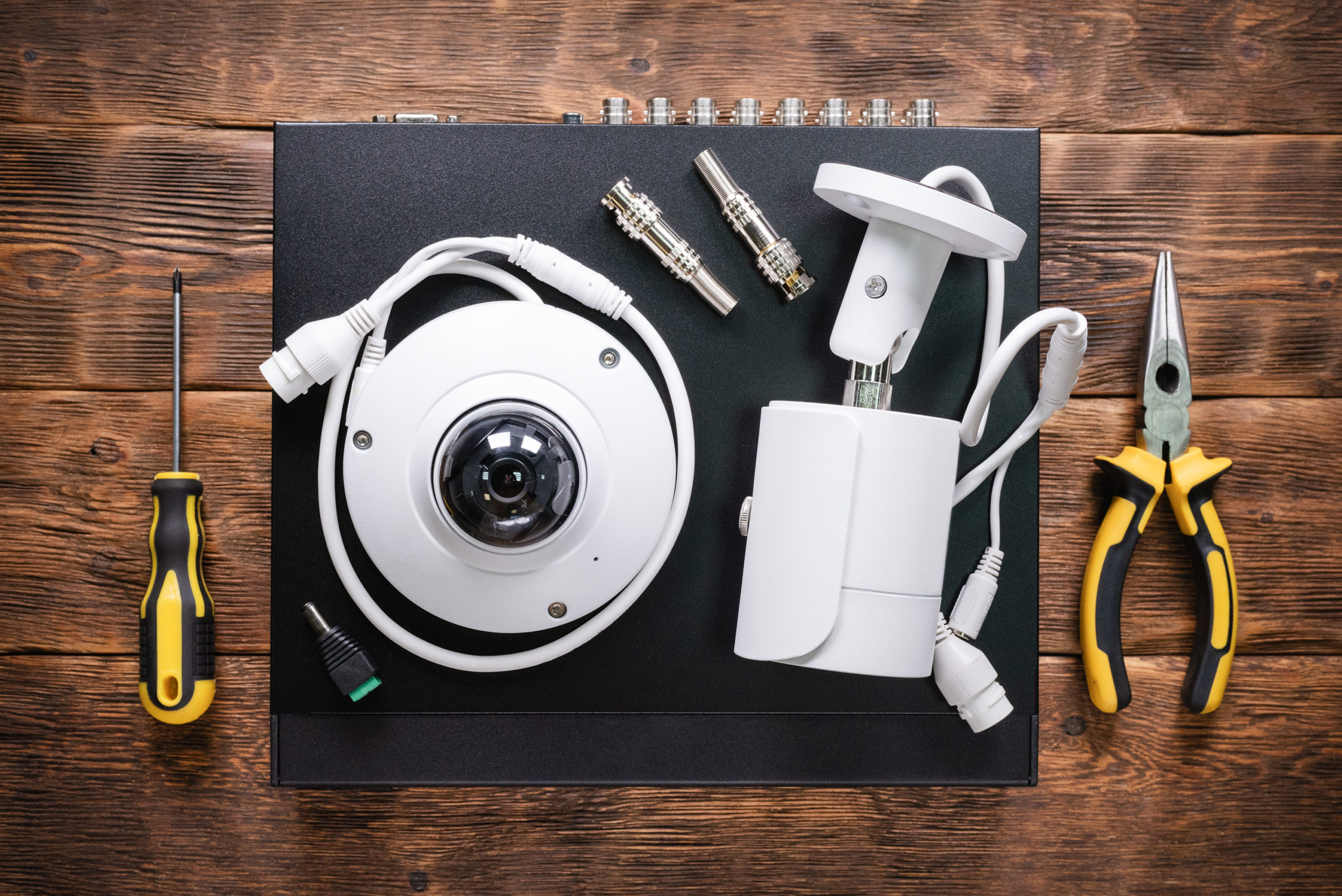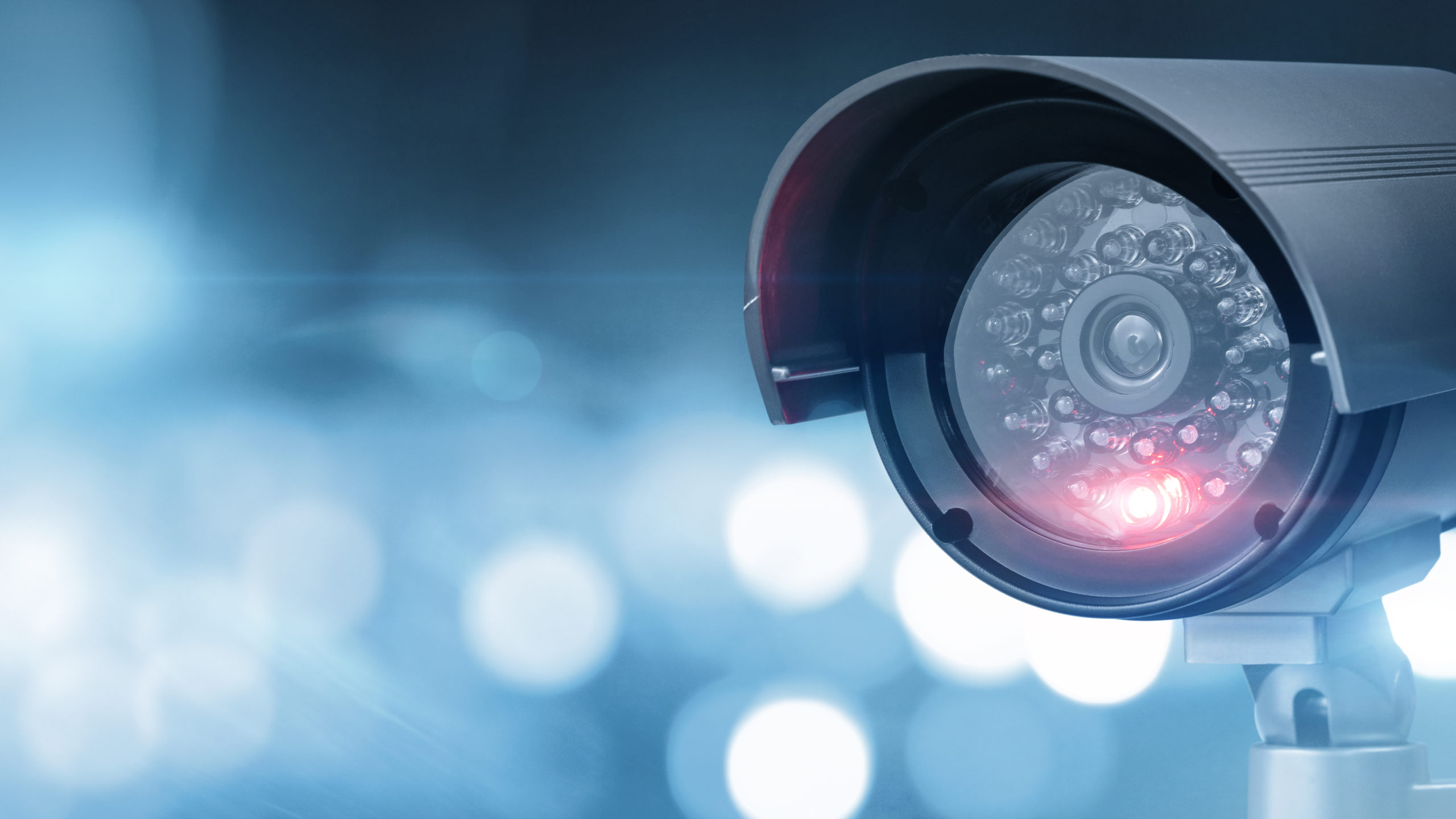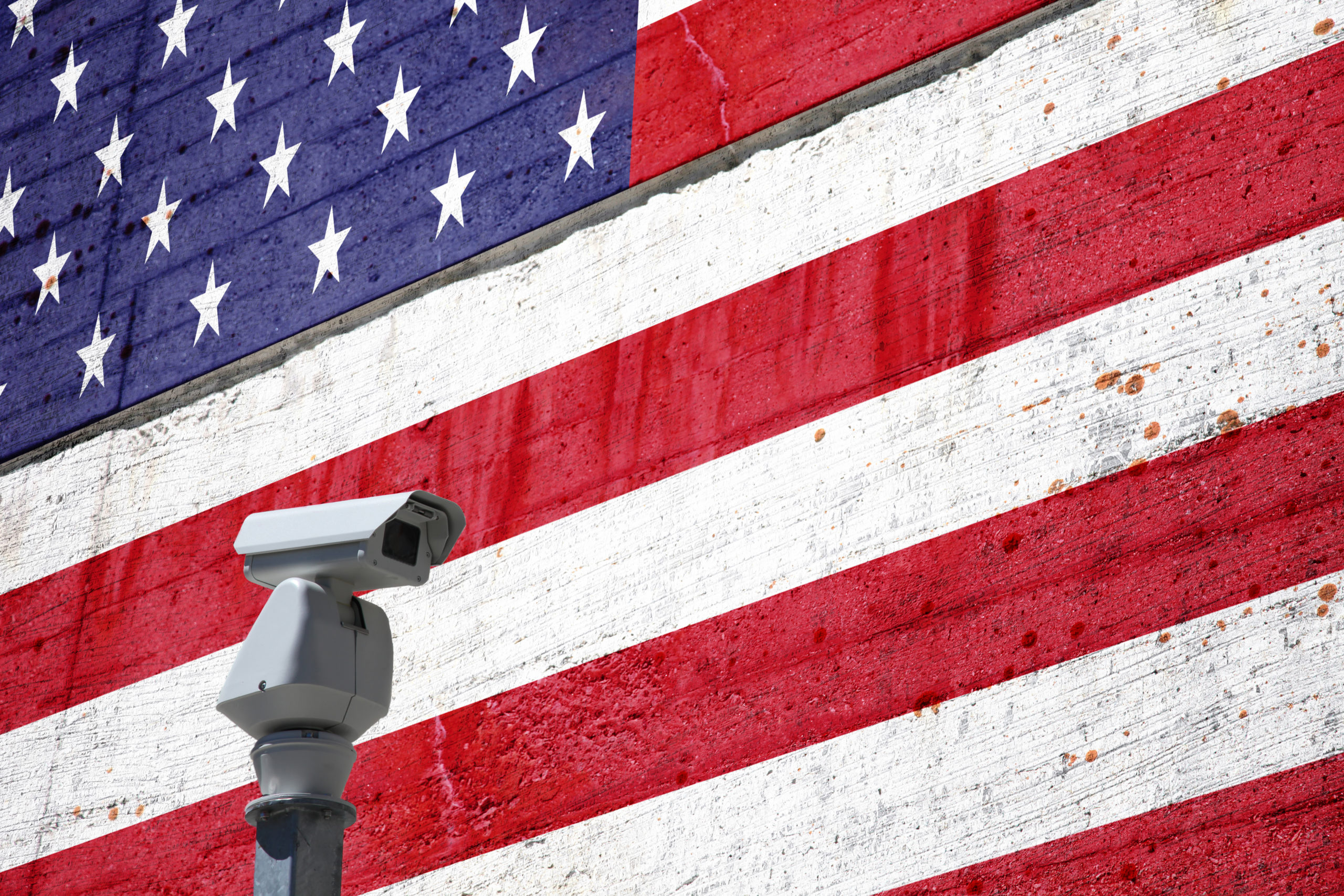In today’s rapidly evolving security landscape, businesses are increasingly recognizing the importance of robust surveillance systems. The days of relying solely on traditional on-site guards or outdated CCTV systems are long gone. As technology advances, so does the need for smarter, more efficient methods of protecting assets, employees, and data. Remote surveillance offers a powerful solution, combining the best of modern technology with cutting-edge monitoring techniques. But why should your office invest in remote surveillance? Let’s explore the compelling reasons, backed by research and data.
1. Cost-Effective Solution
One of the primary reasons businesses adopt remote surveillance is its cost-effectiveness. Traditional security solutions such as hiring on-site security personnel can be expensive. According to a report by Allied Market Research, the global security services market, which includes manpower and physical security, is expected to reach $257 billion by 2025. Salaries, training, and benefits for security personnel often add up, making it an unsustainable option for smaller businesses. Remote surveillance, on the other hand, eliminates these ongoing expenses.
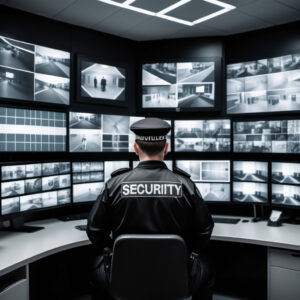 Reduced Operational Costs
Reduced Operational Costs
The installation of a remote surveillance system typically involves an upfront investment, but the long-term savings are significant. A 2020 study by Frost & Sullivan found that companies implementing remote monitoring solutions saw a reduction of 30-40% in operational security costs compared to those relying on physical security guards. This includes reduced liability, fewer staffing needs, and the ability to scale easily as your business grows.
Additionally, remote systems can often cover more ground than a single human guard, ensuring that blind spots in the physical security landscape are minimized. High-definition cameras with advanced features, such as night vision and motion detection, provide round-the-clock monitoring without needing breaks or supervision.
2. 24/7 Surveillance with Real-Time Alerts
A significant advantage of remote surveillance is the ability to monitor your office 24/7, regardless of whether the building is occupied. Unlike human guards who work in shifts and may miss critical moments, remote systems are always active. Moreover, these systems provide real-time alerts, allowing businesses to respond to incidents as they happen.
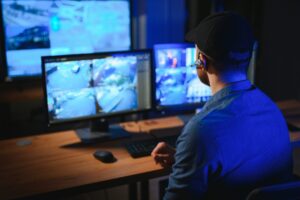 Proactive Monitoring
Proactive Monitoring
Modern remote surveillance systems use Artificial Intelligence (AI) to detect irregularities and trigger alarms when suspicious activities occur. According to Security Today, remote systems with AI can reduce false alarms by up to 70%, improving the efficiency of response teams. This means that instead of reacting after an incident occurs, the system can proactively prevent potential security breaches.
For instance, cameras equipped with video analytics can detect unusual patterns, such as loitering, unauthorized access, or movements after working hours. This type of advanced monitoring ensures that potential threats are addressed immediately, significantly reducing risks.
3. Enhanced Employee Safety
Employee safety is paramount in any business, and a robust remote surveillance system plays a vital role in safeguarding the workplace. Surveillance systems create a secure environment by deterring criminal activities and providing real-time support during emergencies. Research from OSHA (Occupational Safety and Health Administration) shows that businesses with comprehensive safety and surveillance protocols experience a 40% reduction in workplace violence.
Emergency Response
Modern surveillance systems offer features like panic buttons and direct access to emergency services, providing employees with immediate help in case of an emergency. Having visible cameras also discourages theft, harassment, and other unwanted behavior, making the workplace a safer environment.
 Remote surveillance systems also help monitor high-risk areas like parking lots, entrances, and dark corridors, ensuring employees feel secure even in less populated sections of the office.
Remote surveillance systems also help monitor high-risk areas like parking lots, entrances, and dark corridors, ensuring employees feel secure even in less populated sections of the office.
4. Compliance and Legal Protection
Many industries require businesses to adhere to specific security protocols to protect both employees and sensitive information. Failure to comply with these regulations can result in hefty fines or lawsuits. Remote surveillance systems help ensure compliance with industry standards, such as GDPR (General Data Protection Regulation) in Europe or HIPAA (Health Insurance Portability and Accountability Act) in the U.S.
Legal Documentation
Beyond compliance, surveillance systems provide invaluable legal protection in the event of disputes or criminal incidents. Video footage offers solid evidence in cases of vandalism, employee misconduct, or workplace injuries. According to a report, businesses equipped with surveillance cameras were able to resolve workplace incidents 50% faster, thanks to clear, recorded evidence.
In the case of insurance claims, having a clear video record of events can expedite the claims process and reduce litigation costs. In many instances, insurance companies offer discounts to businesses with high-quality security systems in place, further reducing operational costs.
5. Scalability and Flexibility
Remote surveillance systems offer an unparalleled level of scalability and flexibility. Whether you’re managing a small office or a multi-location enterprise, these systems can easily be expanded to meet your needs.
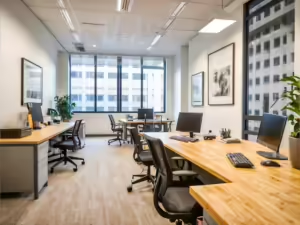 Customizable Systems
Customizable Systems
The scalability of remote surveillance is one of its strongest features. A report predicts that the video surveillance market will grow from $45.5 billion in 2020 to $74.6 billion by 2025, largely driven by the rise of scalable cloud-based surveillance solutions. These systems allow businesses to add new cameras or monitoring points without significant reconfiguration.
Moreover, remote surveillance can be accessed from anywhere with an internet connection. This level of flexibility ensures that you can monitor your office from home, on the go, or even from different continents, providing peace of mind and real-time control no matter where you are.
6. Data Analytics and Predictive Maintenance
Surveillance is no longer about simply watching footage; modern systems utilize data analytics to predict and prevent security breaches. AI-driven analytics provide businesses with insights into patterns and trends, allowing for predictive maintenance of both security systems and potential threats.
Intelligent Analytics
AI-powered surveillance systems can analyze data in real-time to detect abnormal behaviors. According to a 2022 study, using AI-driven surveillance systems saw a 25% reduction in security incidents compared to those using traditional systems. These systems can identify patterns such as frequent entry into unauthorized areas or repeated movements around restricted zones, helping prevent incidents before they occur.
Predictive maintenance is another crucial feature. With AI, systems can alert businesses to potential equipment malfunctions or failures, reducing downtime and ensuring continuous security coverage.
7. Environmental Adaptability
Remote surveillance systems are highly adaptable to different environments and can be tailored to meet specific business needs. Whether your office is in an urban area with heavy foot traffic or a remote location, these systems provide the versatility required for comprehensive monitoring.
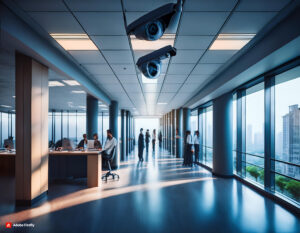 Weather-Resistant Equipment
Weather-Resistant Equipment
High-quality remote surveillance cameras are designed to withstand harsh environmental conditions, such as extreme heat, cold, or rain. Weather-resistant cameras are vital for outdoor monitoring and continue to function optimally in extreme conditions. This adaptability ensures that no part of your office, whether indoors or outdoors, is left unmonitored.
8. Improved Productivity and Operational Efficiency
One often-overlooked benefit of remote surveillance systems is the improvement in employee productivity. The presence of cameras not only deters criminal activities but also encourages employees to stay focused and follow workplace guidelines.
Monitoring Performance and Efficiency
According to a 2023 report by Harvard Business Review, businesses that implemented video monitoring saw a 10-15% increase in employee productivity. This is largely because employees are more likely to remain accountable and adhere to company policies when they know they’re being monitored.
Additionally, remote surveillance allows businesses to identify workflow bottlenecks, track employee attendance, and ensure compliance with health and safety regulations. This translates to a more efficient workplace where issues can be addressed promptly.
 9. Integration with Other Office Systems
9. Integration with Other Office Systems
Modern remote surveillance systems can be integrated with other business systems, such as access control, lighting, and HVAC systems. This creates a seamless, automated office environment where security is tightly integrated with daily operations.
Smart Office Integration
The concept of “smart offices” is becoming increasingly popular, with more businesses adopting integrated systems that allow for seamless operations. For example, integrating surveillance with access control systems can enable automatic locking of doors, logging of entry and exit times, and remote management of building access. Gartner estimates that 70% of smart offices will have integrated security systems by 2025.
These integrations not only improve security but also optimize office functions such as energy use, creating a more sustainable and efficient environment.
10. A Future-Proof Investment
As businesses grow and evolve, so do their security needs. Remote surveillance systems are future-proof solutions that can be upgraded as new technologies emerge. Whether through AI-driven analytics, advanced biometric recognition, or integration with Internet of Things (IoT) devices, remote surveillance is a long-term investment that will continue to provide value as security technologies advance.
 Staying Ahead of Threats
Staying Ahead of Threats
By 2025, 60% of companies will integrate AI-based systems into their security infrastructure. Investing in remote surveillance today ensures your office is well-equipped to handle future security challenges. As cyber-physical threats continue to rise, having a surveillance system that evolves with technological advancements is crucial for long-term success.
Conclusion
Investing in remote surveillance for your office isn’t just about protecting assets—it’s about enhancing overall operations, improving safety, and ensuring compliance. With AI-driven analytics, real-time monitoring, and seamless integration with other systems, remote surveillance offers a comprehensive solution for modern offices. As the security landscape continues to evolve, businesses that adopt these technologies will be better positioned to handle both current and future threats.






